NAPLES — Peter Casey makes corned beef and cabbage twice a year – once for St. Patrick’s Day, and once a few weeks earlier, for his wife, who loves it so much she has a hard time waiting for March 17.
Corned beef and cabbage is as uncomplicated as it gets, an Irish peasant food whose simplicity has kept it attractive to generations of American cooks celebrating their Irish heritage. The Irish themselves don’t eat it much – not even on St. Patrick’s Day.
Casey’s version, which he developed over the past two decades to honor his own Irish roots, is special not because of what’s in it, but because of the way he assembles it. He takes his time, preparing one ingredient at a time instead throwing the meat and the vegetables into one pot to cook.
“Some people put it all together, but when you take it out the meat’s tough,” he said in his kitchen in Naples, where his half-Papillon, half-Maltese dog Lucy danced at his feet while he cooked. “If I did that, after 45 minutes the veggies are going to fall apart.”
Casey, 60, is Irish on his father’s side. His grandfather came to the United States in 1905, and his grandmother just after. They were from different counties – Kerry and Cork – so they didn’t meet until they came through Ellis Island and settled in Massachusetts. By 1913, the couple was building their own house.
Casey never got to meet his grandfather, who died when Casey was a baby.
Casey’s father was a member of the Ancient Order of Hibernians, America’s oldest Irish Catholic fraternal organization. Every year, he took his family to the group’s St. Patrick’s Day dinner. When Casey grew up and eventually moved to Maine, he started making the annual meal of corned beef and cabbage himself. Casey is now retired from the restaurant-cleaning business, but at the time he started developing his recipe he gathered advice from his chef friends. Add vinegar to the broth, they told him, to help tenderize the meat. Check for doneness with a two-tined fork; if the meat doesn’t come off the fork easily, it needs more time.
Before long, Casey began hosting a neighborhood St. Patrick’s Day party. The amount of corned beef he needed for his pot kept growing. One year, he used 180 pounds – 90 pounds for his party, and another 90 pounds for a St. Patrick’s Day dinner at his church.
He’s even tried corning his own salt-cured beef in a barrel at a local meat market.
Eventually, the party got to be too much. “At $6 a pound of meat, we don’t have those parties anymore,” Casey said. “We do – it’s just not the whole neighborhood. So probably a half a dozen friends. The big parties are gone, but we still do this every St. Patty’s Day.”
Casey doesn’t know much about his Irish heritage except for what he’s learned at family reunions and through two family trips to Ireland. It’s fun for him to note that actor Pierce Brosnan, a former James Bond, is a distant cousin.
On Casey’s first trip to Ireland, in 1981, he visited with his father’s cousins. “We went to the original house where my grandmother grew up, but she left there as a young teenager,” he said. “It must have been awful leaving your parents and you’re never going to see them again. That must have been really tough.”
He also met his grandfather’s sister, who was bedridden and a little befuddled.
“I was young at the time and had a beard, and she thought I was Jesus,” he recalled. She asked, ” ‘Is that Jesus at the end of the bed?’ ”
His father’s cousin explained to her who he was, and she asked, ‘How’s Tom doing over there?’ ”
Casey had to explain to her that his family did just fine in America, but his grandfather had been dead for decades.
Casey was impressed by the hospitality of the Irish. “You go to somebody’s house, and they’re setting the table. You’re going to stay and eat,” he said.
This year, Casey made his first batch of corned beef and cabbage on Feb. 4, when Maine was being pummeled by snowstorms. The temperature the night before had dipped to 6 below. He already had the house decorated for St. Patrick’s Day, possibly for the benefit of this reporter, including a shamrock tablecloth in the dining room. As the meat and vegetables each finished cooking, Casey lined them up in a steam table, and the orange of the carrots, the green of the cabbage and the white of the potatoes reflected the colors of the Irish flag.
Like his Irish relatives, Casey insisted his guests stay and eat.
PETER CASEY’S CORNED BEEF AND CABBAGE
Casey prefers a shoulder roast to a brisket since it is less fatty. To make the broth, he suggests any kind of beer but stout. He suggests freezing any leftover broth for use later in mashed potatoes and soups. Freeze it in ice cube trays, then store the cubes in freezer bags.
Serves 8 to 10
1/2 cup vinegar
1/3 cup pickling spice
1 heaping teaspoon minced garlic
2 (12- or 16-ounce) cans beer
4-5 pounds corned beef
1 medium turnip, peeled and cut into roughly 1-inch pieces
8-10 carrots, peeled and cut into 1-inch pieces
8-10 medium red bliss potatoes, cut into 8 pieces each
2 small cabbages, outer leaves removed
10-12 small white onions (optional)
Fill a large pot at least half full with water. Add the vinegar, pickling spice, garlic and beer. Bring to a boil, then add the corned beef.
Turn the burner down to a low simmer and cook the meat for 3 hours, or a little longer. Toward the end, stick a large, two-tined fork into the meat and slowly lift it up. When the fork comes out easily, the meat is done.
Remove the beef from the pot right away and place it in a large bowl or on a platter. Cover and refrigerate overnight. Refrigerate the broth separately. The next day, remove the meat from the refrigerator and let it come to room temperature. Meanwhile, strain the broth and discard the congealed fat and spices. Rinse the pot and return the broth to it. Heat the broth to simmering.
Cut the cabbages in half and then in thirds. Make sure each wedge has the core attached so it won’t fall apart during cooking.
Now you can cook each vegetable separately, simmering them in the broth until fork tender. Start with the firm vegetables – the turnip, then the carrots. Follow these with the potatoes and cabbage and onions, if using. While the vegetables cook, trim the excess fat from the corned beef. Cut the meat against the grain into slices 1/4- to 1/8-inch thick.
Place the slices in a large chafing dish or any large rectangular pan. As the vegetables finish cooking, remove them from the broth and add them to the dish, arranging the meat and vegetables in rows. When all the vegetables are done, pour the warm broth over everything (it’ll warm the beef nicely) and serve with traditional condiments such as mustard and vinegar.
Send questions/comments to the editors.


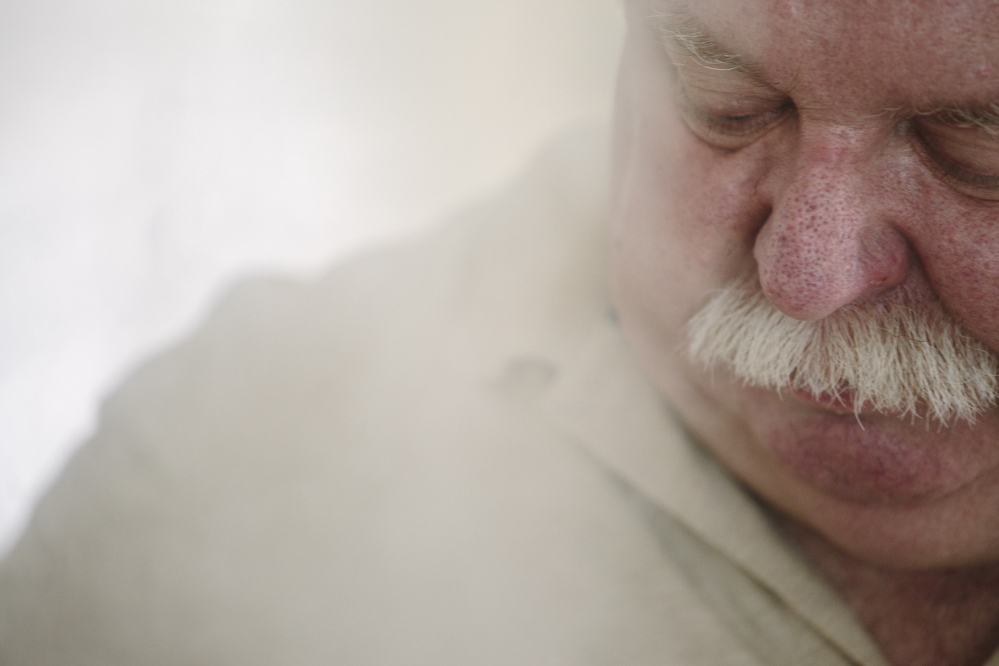
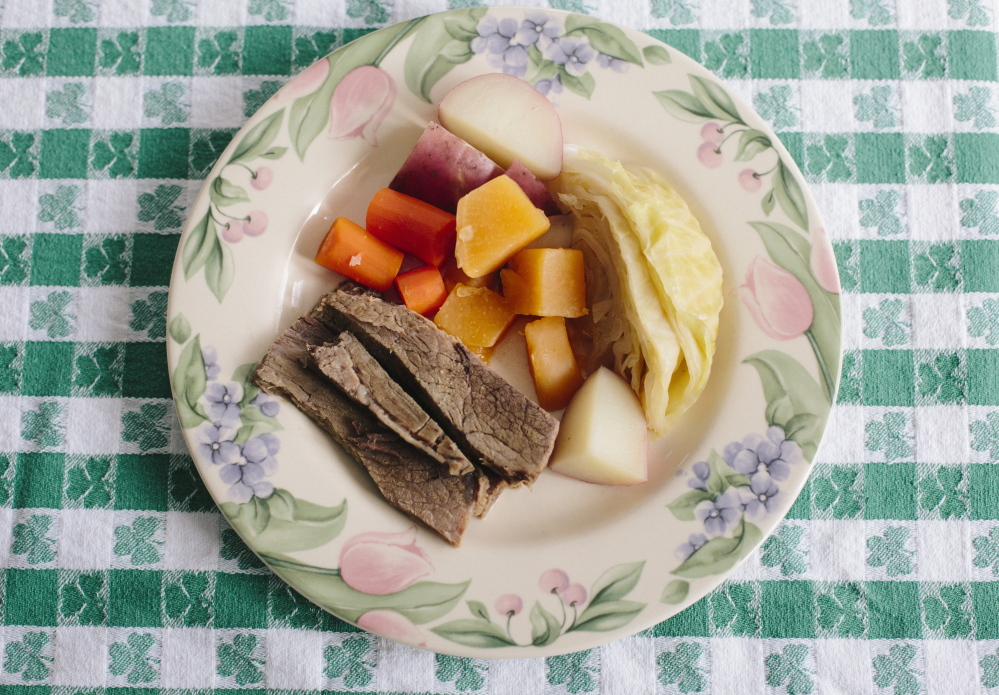
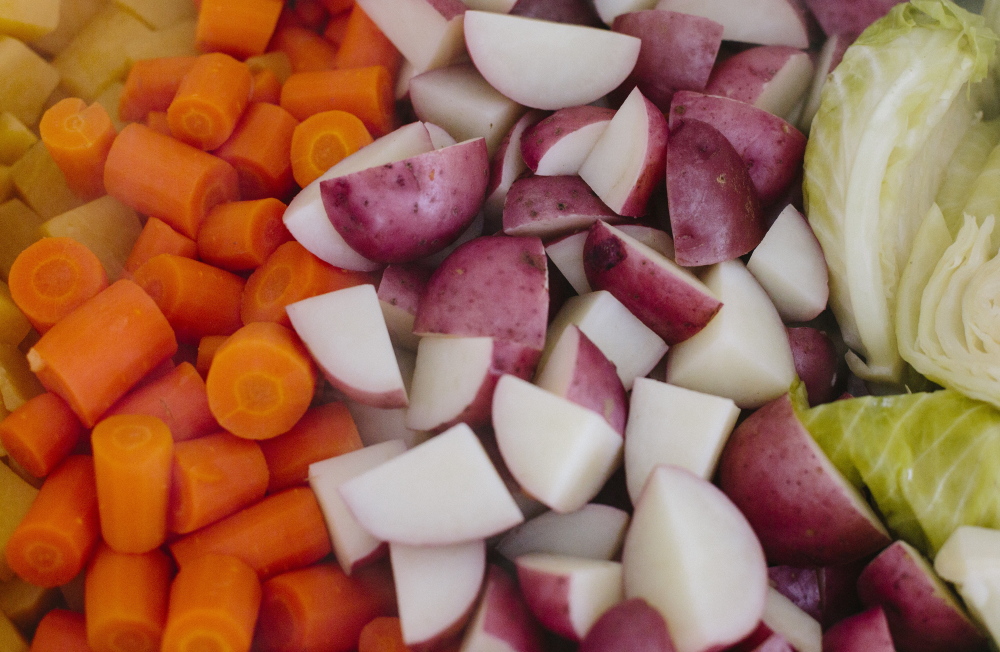
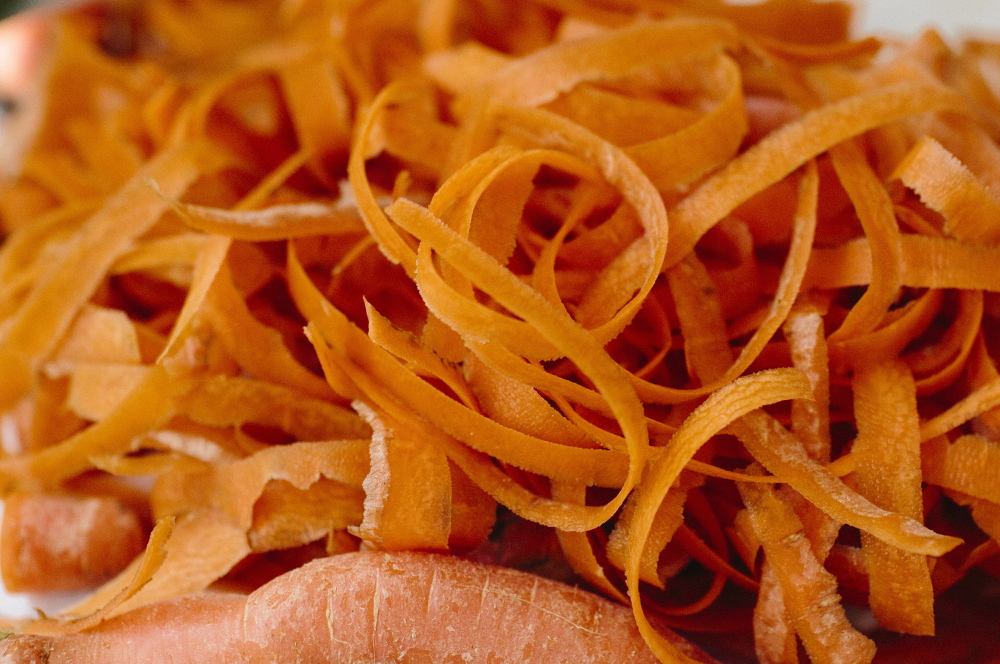
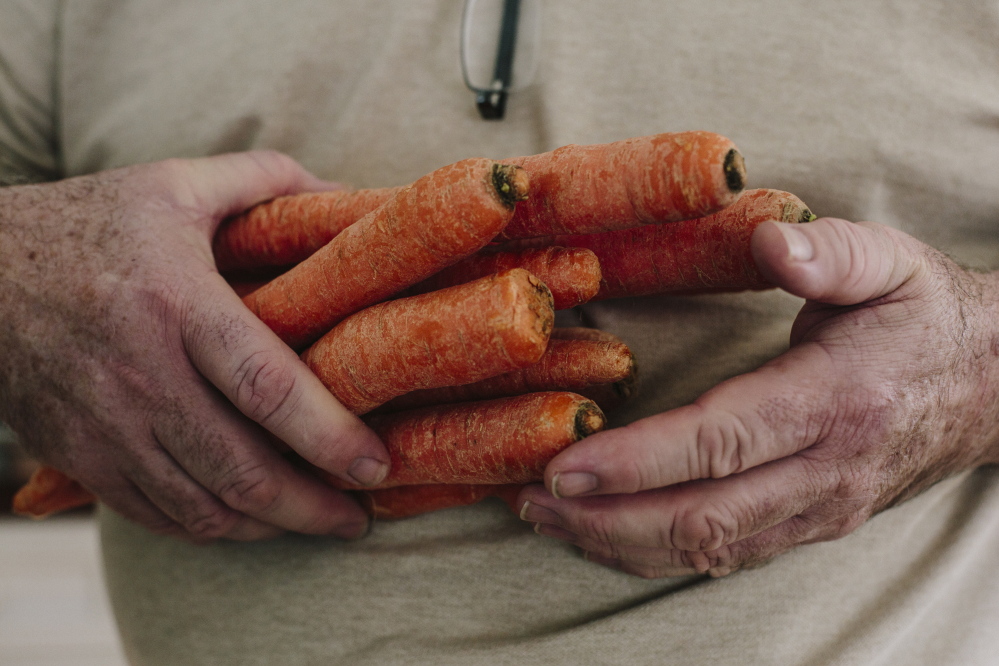
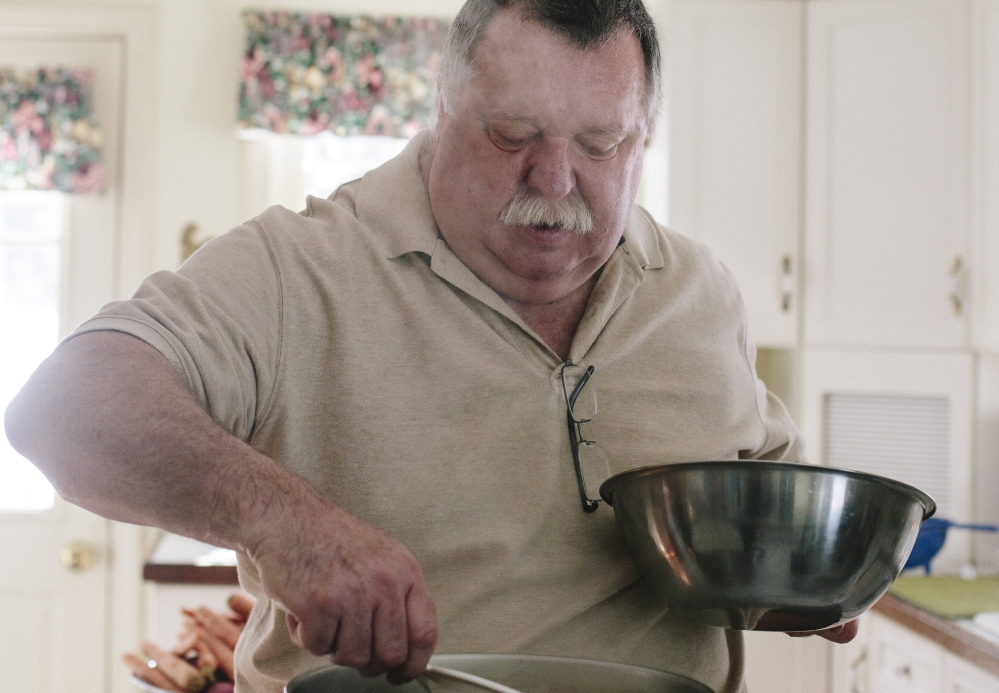
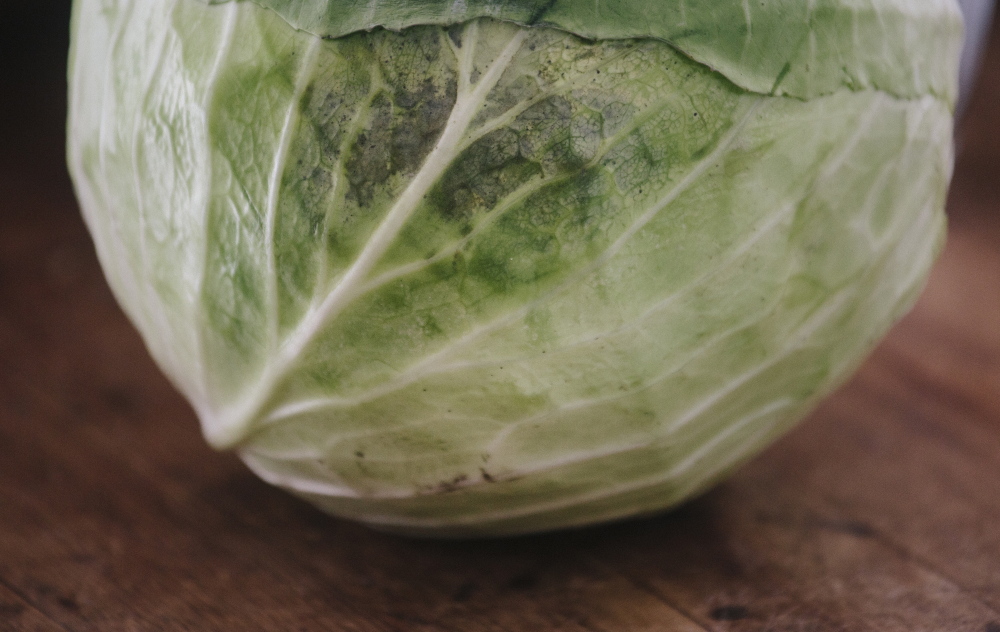


Success. Please wait for the page to reload. If the page does not reload within 5 seconds, please refresh the page.
Enter your email and password to access comments.
Hi, to comment on stories you must . This profile is in addition to your subscription and website login.
Already have a commenting profile? .
Invalid username/password.
Please check your email to confirm and complete your registration.
Only subscribers are eligible to post comments. Please subscribe or login first for digital access. Here’s why.
Use the form below to reset your password. When you've submitted your account email, we will send an email with a reset code.